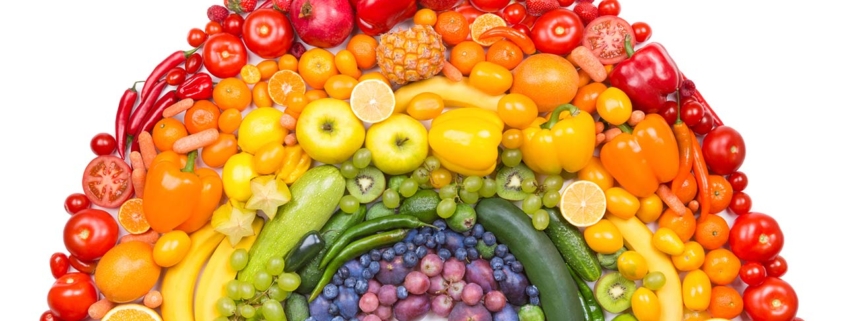Chicago Home and Lifestyles – Eating the rainbow: the best fruits and vegetables for overall health

We all know we need to include fruits and vegetables in our diet for good health. The different colors of these foods are often referred to as the rainbow. Each color signifies different nutrients that are essential for a balanced diet. These nutrients are called phytonutrients and there are at least 5,000 different ones! Here are some of the “colors of the rainbow” and what they do for our bodies.
Orange vegetables and fruits contain carotenoids like beta-carotene. It is converted to vitamin A which is important for good eyesight. It is also an antioxidant that targets free radicals building up around cell membranes. This reduces the risk of heart disease and cancers. So, include lots of orange fruits and vegetables in your diet like pumpkin, carrots, squash, oranges and apricots.
Red fruits and vegetables also contain carotenoids, but they are different from what is found in their orange cousins. They include quercetin and lycopene. They are found in tomatoes and the capsicum found in chiles. Fruits like apples, cherries, red grapes, and strawberries are good sources. These carotenoids mop up the free radicals in your body. Free radicals come from air-pollutants, chemicals and even formed naturally from simply breathing and moving. Adding these free radical fighters reduces the risk of many diseases like arthritis, heart disease, diabetes, cancer and stroke.
Yellow fruits and vegetables also contain carotenoids in addition to lutein, zeaxanthin, viola-xanthin and others. These are particularly important for eye health and protect them from sun damage. It can reduce the risk for macular degeneration, the blurring of your central vision. Include yellow in your diet like apples, bananas, lemons, pineapple, yellow squash and corn.
Green fruits and vegetables contain many phytonutrients including chlorophyll, phytosterols, and folate. These are also antioxidants with the same benefits against free radicals. But these keep your blood vessels healthy by making them more flexible and elastic. This allows them to widen or dilate, which reduces blood pressure. Folate is especially recommended during pregnancy to promote heathy cell division and DNA synthesis. Eat all your greens along with brussels sprouts, apples, green tea and pears!
Blue and Purple fruits and vegetables contain anthocyanins, resveratrol and tannins. Anthocyanins also have antioxidant properties that reduce cancer and stroke risk. They have also been found in studies to improve signaling between brain cells to improve memory. Add purple cabbage, eggplant, prunes, blackberries, blueberries and figs to your diet.
Brown and White vegetables like garlic, potatoes, cauliflower, onions and mushrooms contain flavones luteolin, isoetin and allicin. Allicin is known to have anti-viral and anti-bacterial properties. It is another phytonutrient that may normalize blood pressure.
So, let’s include more colors of fruits and vegetables in our shopping cart! Try different colors of fruits and vegetables that you normally eat. Frozen is great too. There are many online recipes which include herbs and spices that also contain phytonutrients, and can add some much needed variety to your diet.
Kathleen Weaver-Zech and Dean’s Team Chicago



